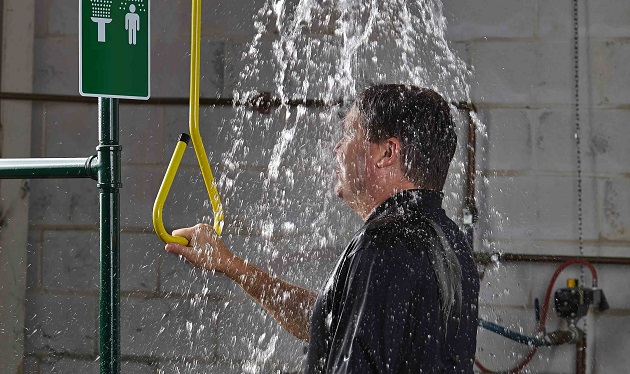The Ideal Ways To Maintain Eyewash And Safety Showers
Safety showers and eyewash stations are critical features for a safety setting where dangerous chemicals are used. Nowadays, it is quite rare to see a laboratory without at least one of them, and that is for a good reason: anytime an individual comes in a direct contact with a hazardous chemical, the response in the first fifteen seconds after the exposure is critical to avoiding serious injury.

While proper personal protective equipment can help avoid the risk of exposure, one should still make sure the eyewash stations work properly in case they need to be activated. With that being said, we offer you the ideal ways to maintain eyewash and safety showers.
1. Provide training to all people who may be exposed to hazardous materials
Safety showers and eyewash stations are only useful if they can be found and activated easily. A person who is exposed should know immediately where to go and how to use the water supply to its maximum performance. Remember, every second is crucial when responding to such accident.
2. Perform weekly and annual inspections
According to the design, inspection and maintenance requirements, a weekly activation of all plumbed eyewash and safety showers should be performed in order to ensure that flushing liquid is available. This practice will also help avoid sedimentation and/or contamination around the head of the equipment. Beside this weekly activation, all safety showers and eyewash stations should be inspected and re-certified annually to ensure conformance with design specification.
3. Make sure that all stations are easily accessible
As mentioned before, it is all about reducing the time between exposure and treatment. Here is how to maintain easy accessibility:
- There should be a 40cm radius from the head of the shower that is totally free of any obstructions. A common mistake people make is using this space as storage. The safest thing to do in this case is to use floor tape to clearly delineate the area.
- There should not be more than one door between a person’s work space and the closest safety station.
4. Periodically complete a site walk and review the stations carefully
Since people and processes are constantly changing in many workplaces, some of the new staff may be unaware of the organization’s inspection and maintenance requirements related to eyewash and safety showers. Completing a thorough site walk will ensure that accessible safety showers and eye wash stations are provided in every location where exposure is possible. Moreover, reviewing your expectations for training and inspections with the responsible parties will help ensure a fast, effective response in case of emergency.



